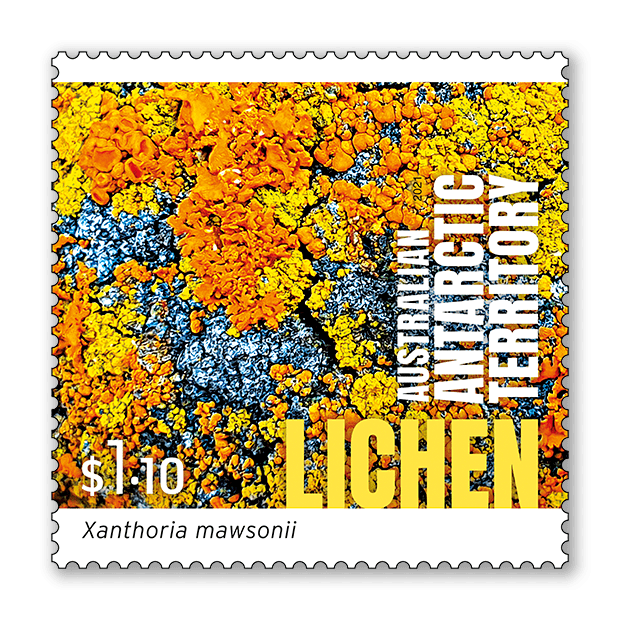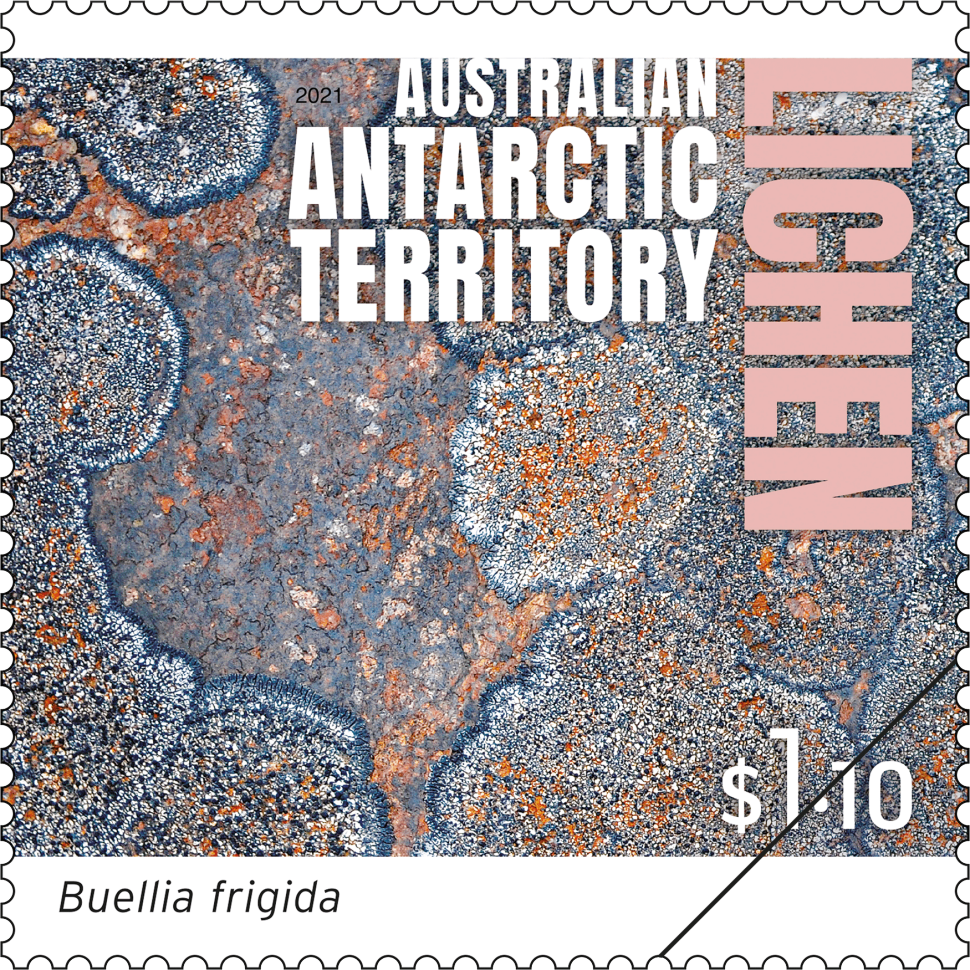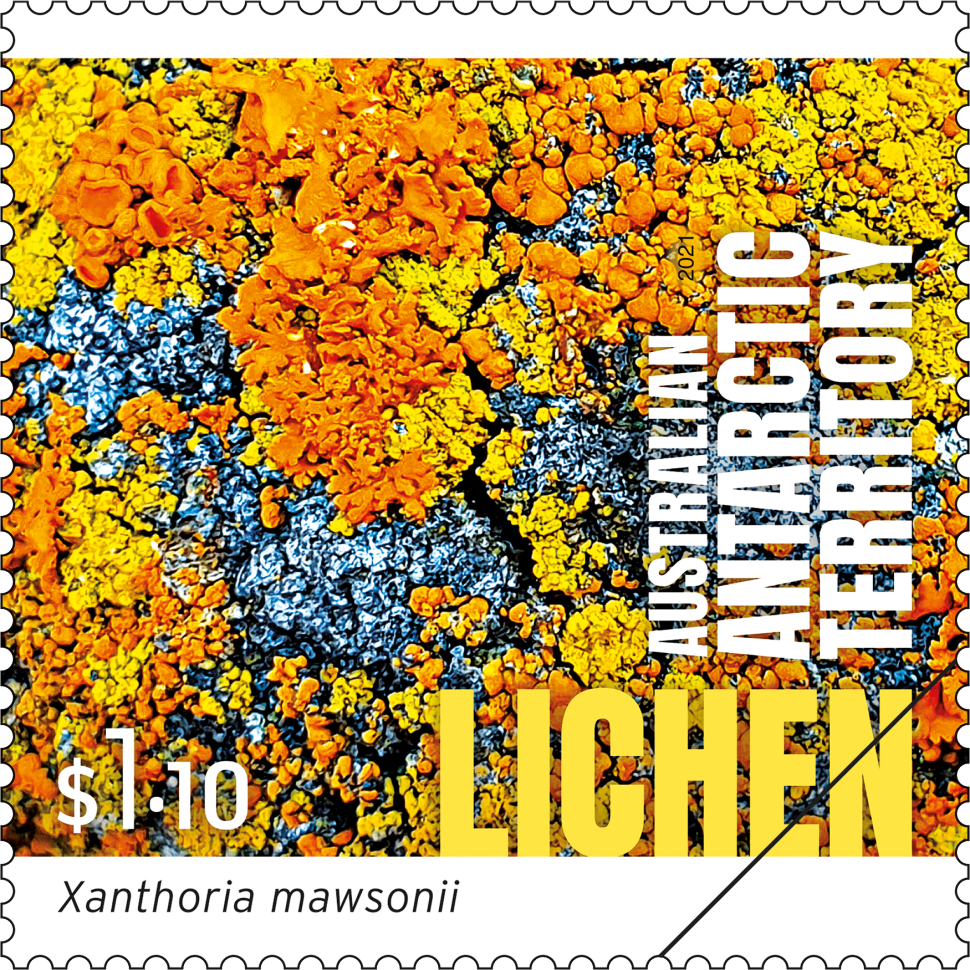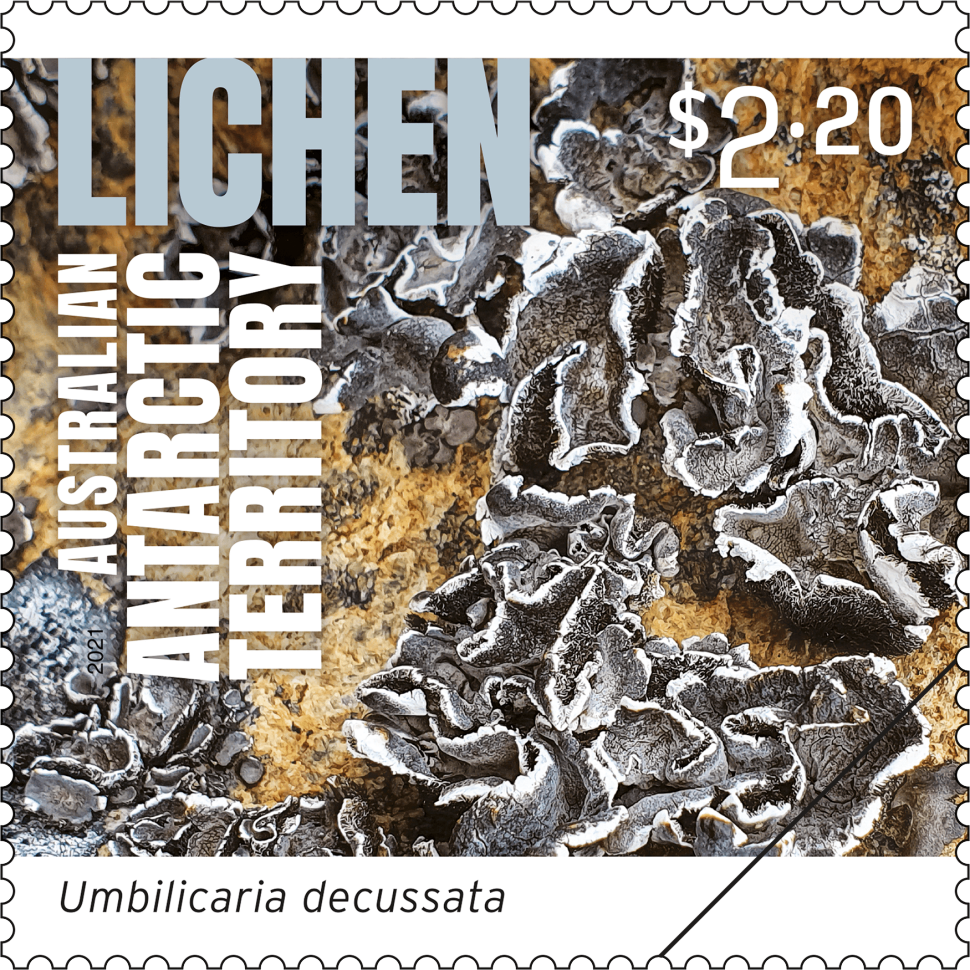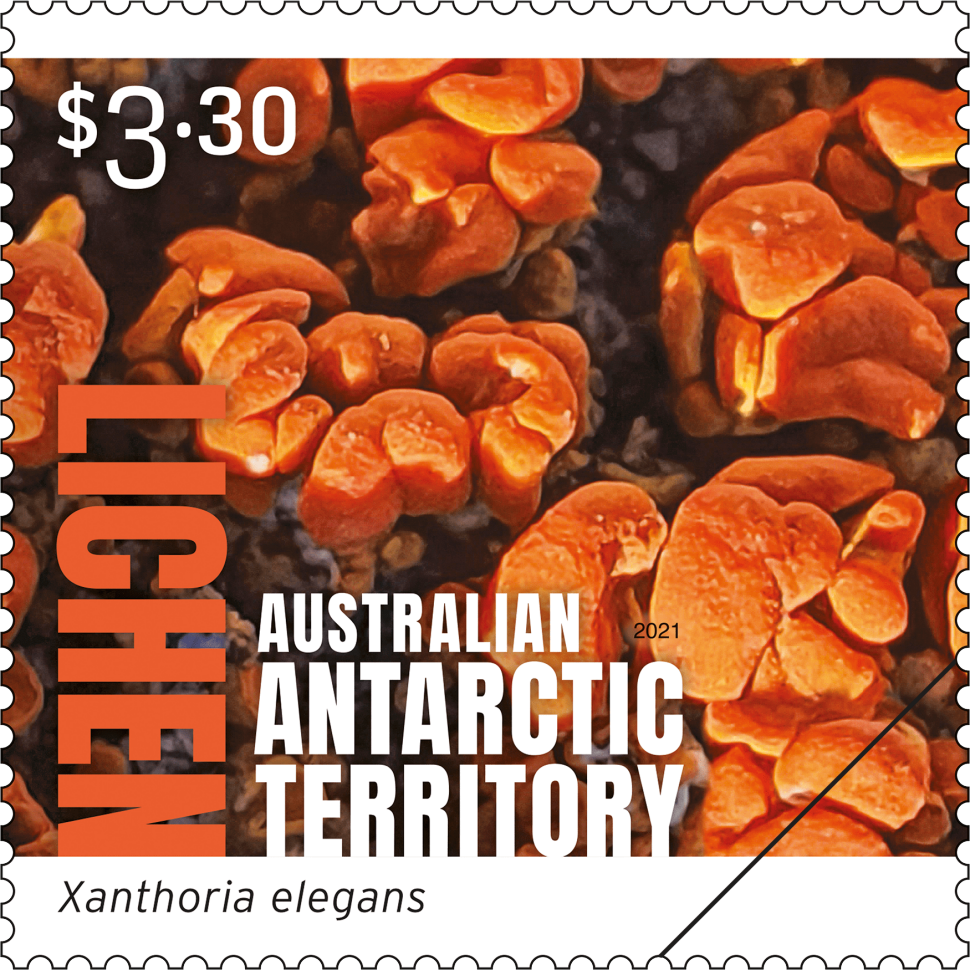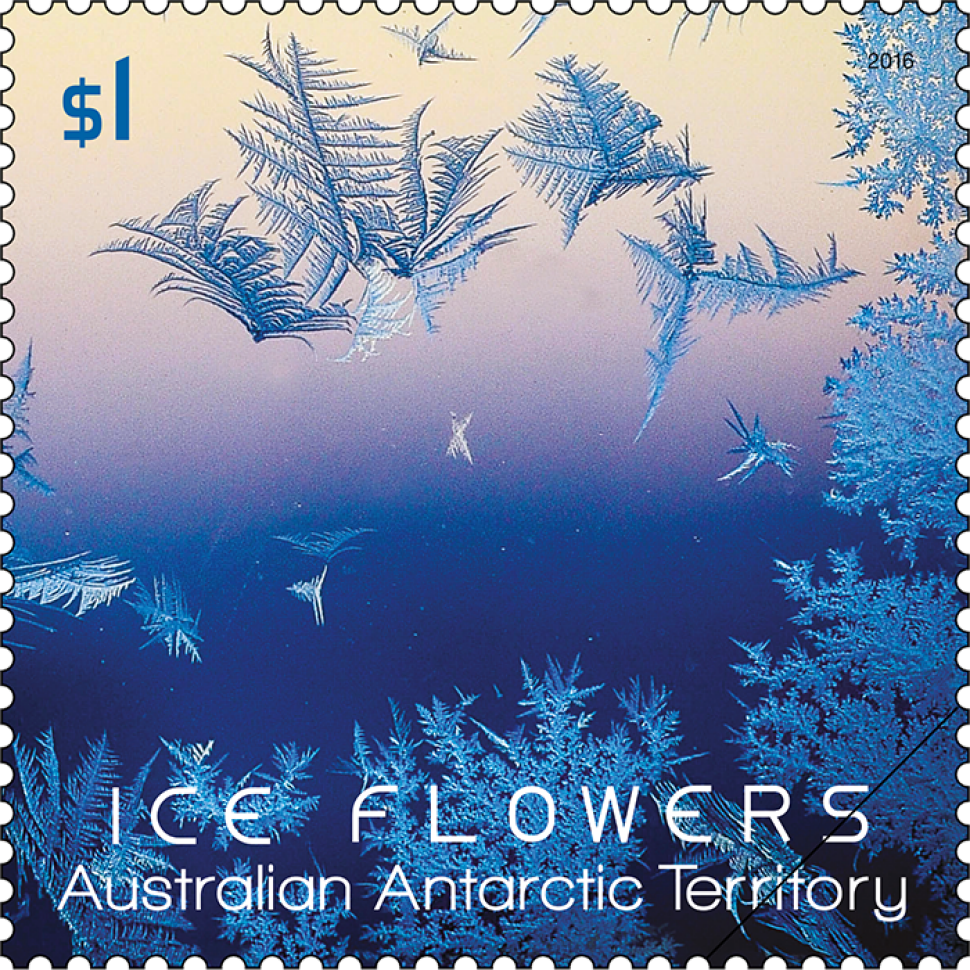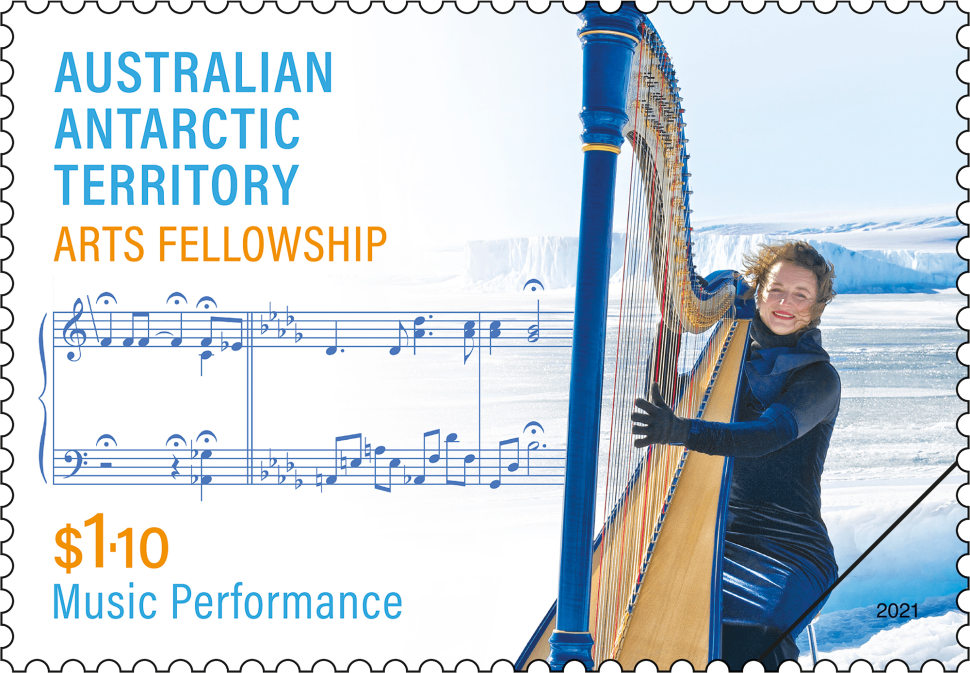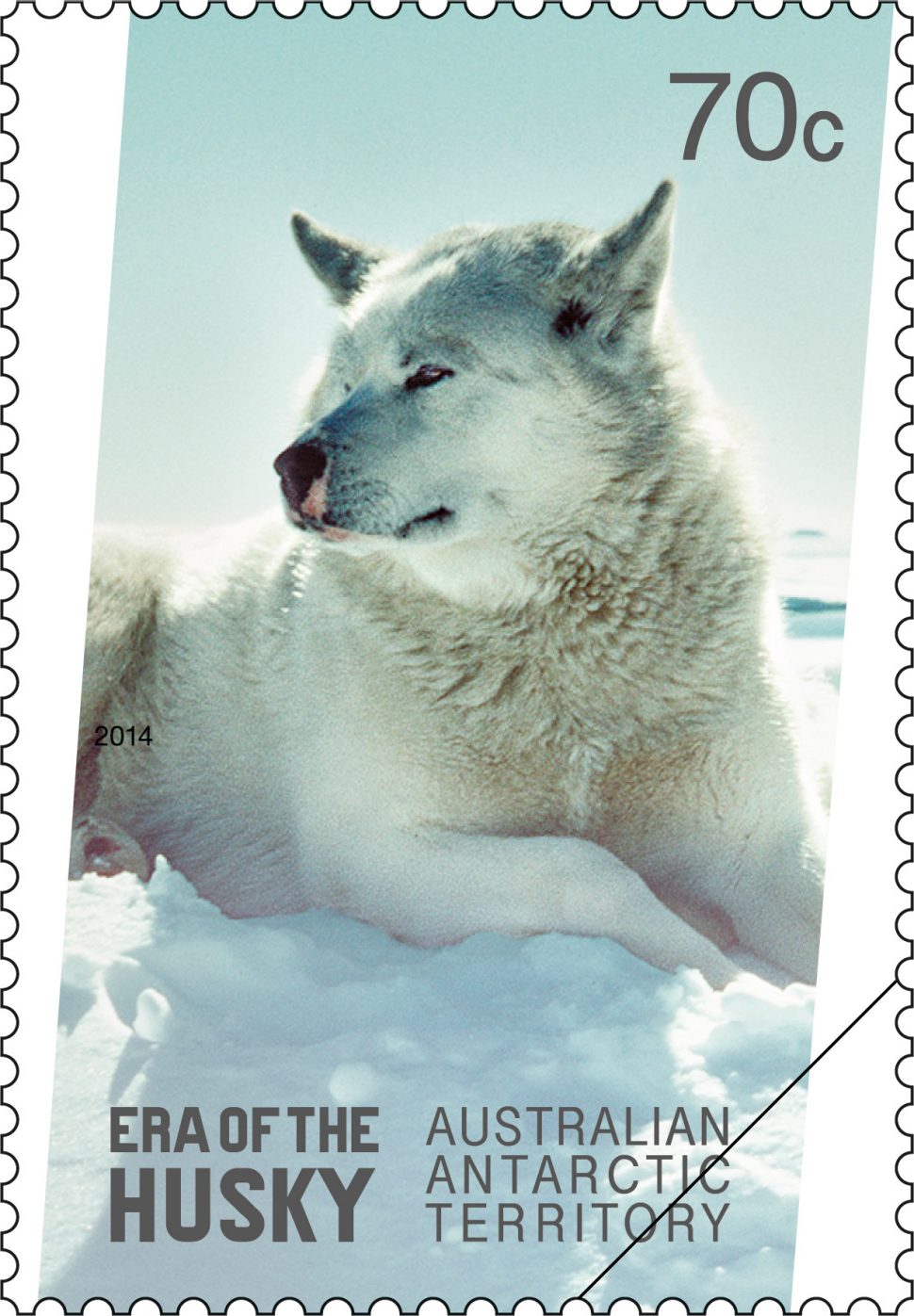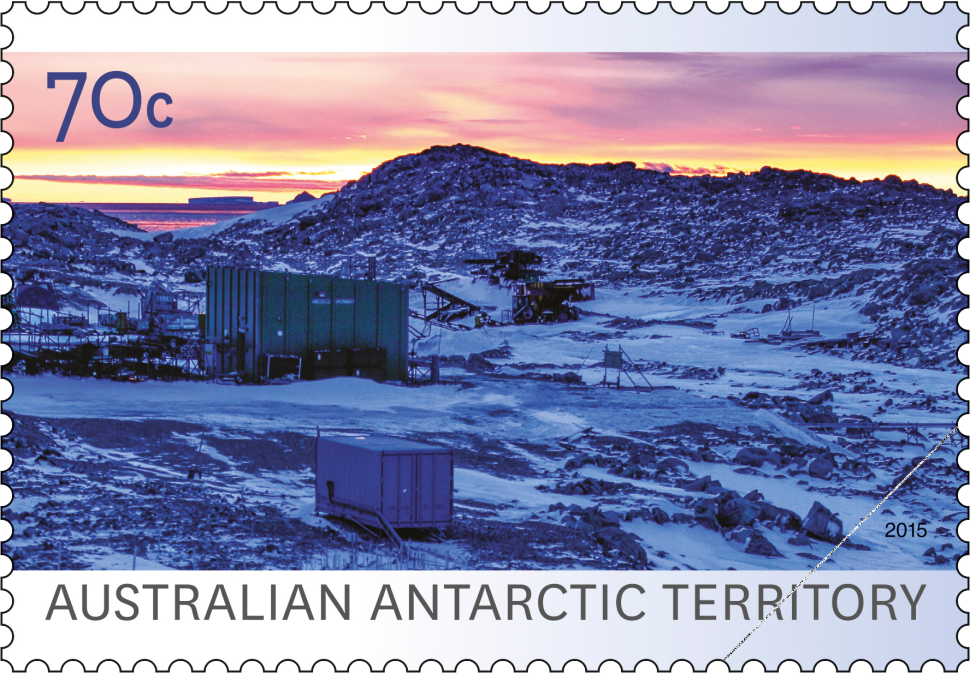Overview
A lichen is a slow-growing, composite plant comprising a fungus with either a green alga or cyanobacteria. It forms through a symbiotic relationship between the two; the fungus takes advantage of the carbon made by the photosynthesising alga and the alga is protected by the fungus and benefits from its ability to extract minerals from rocks.
Lichens are some of the oldest living organisms on Earth and one of only four main types of plants that grow in harsh Antarctic conditions. They have very slow growth rates (in Antarctica, from around one centimetre or more per 100 years to as little as one centimetre per 1,000 years). Lichens also possess several adaptations that enable them to survive in extreme conditions: they can freeze dry to survive the dark winters, when temperatures are below -20 degrees Celsius; they can absorb water from snow or the tiniest of melted droplets; and they can begin to resurrect under a blanket of snow in spring.
In Antarctica, three main types of lichens exist: crustose lichens, which form a thin crust on the surface of the substrate on which they grow (such as rocks or even moss); foliose lichens, which form leaf-like lobes; and fruticose lichens, which have a shrubby, coral-like appearance.
This stamp issue features close-up photographs of four lichens from hilly areas, near Australia’s Davis research station.
Technical specifications
- Issue date
- 5 October 2021
- Issue withdrawal date
- 30 April 2022
- Denomination
- $1.10 x 2, $2.20 x 1, $3.30 x 1
- Stamp design
- Jason Watts, Australia Post Design Studio
- Product design
- Jason Watts, Australia Post Design Studio
- Paper: gummed
- Tullis Russell
- Printer
- RA Printing
- Printing process
- Offset lithography
- Stamp size (mm)
- 35 x 35
- Minisheet size (mm)
- 170 x 80
- Perforations
- 14.28 x 14.28
- Sheet layout
- Module of 50
- FDI Postmark
- Kingston Tas. 7050
- FDI withdrawal date
- 3 November 2021
$1.10 Buellia frigida
Buellia frigida is a widespread, very tough crustose lichen. It is the most abundant lichen in the Australian Antarctic Territory (AAT). It grows as a flat mat, only 1mm or so in height, across rock surfaces in an ever-expanding circle. When one lichen collides with another, they merge to form an undulating edge. Wind pruning and desiccation curtails the growth of Bullelia frigida, so that it’s the most commonly found on the leeward, shady side of rocks, often facing south. The stamp photograph is by Peter Hargreaves, via the Australian Antarctic Division.
$1.10 Xanthoria mawsonii
The lichen Xanthoria mawsonii grows in the coastal regions of Antarctic and is very visible due to its bright orange-red colour. It grows on rocks in exposed conditions and, over time, slowly biodegrades these rocks into soil. Xanthoria species are usually associated with bird colonies as they rely on bird faeces for nutrients. Xanthoria mawsonii is reported to be one of the most photosynthetically productive lichen species. It needs moisture to photosynthesise which it gets from spring snow melt, but it can also absorb water vapour from the air. It can photosynthesise at very cold below zero temperatures and can endure rapid freezing to very low temperatures. On the stamp, this species appears with the yellow lichen, Caloplaca citrina. The stamp photograph is by Patti Virtue.
$2.20 Umbilicaria decussata
Umbilicaria decussata, being foliose, is one of the tallest lichens in the AAT, growing up to 10 millimetres in height. It looks and feels like grey-black cornflakes stuck to rocks. It is highly susceptible to human disturbance, as a misplace footstep can easily break off the leaf-like structures. It's often found growing closely to Buellia frigida, but in the more sheltered part of a rock jumble. Its structure allows for entrapment of soil, dust and guano particles which are accessed to aid growth. The stamp photograph is by Dana M Bergstrom.
$3.30 Xanthoria elegans
Xanthoria elegans is known as the elegant sunburst lichen because of its yellow orange colour, while its lower surface is white. It too grows on rocks near bird colonies where it relies on nutrients from bird faeces. It has fruiting structures on the surface that come in various shades – from orange-yellow to dark orange-red, depending on the moisture level of the surrounding area. These very bright carotenoid pigments in Xanthoria species are important in protecting them from the intense UV radiation in polar regions in the summer. Xanthoria elegans also grows in the Arctic and alpine regions of all continents, except Australia. The stamp photograph is by Patti Virtue.
Shop our stamp collectables
Set of stamps:
Set of AAT: Lichen Gummed Stamps
This set of stamps contains all four stamps from the AAT: Lichen stamp issue.
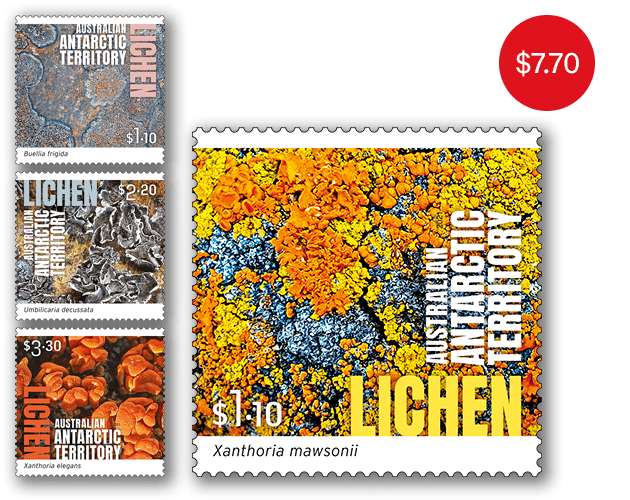
Stamp pack:
AAT: Lichen Stamp Pack
The AAT: Lichen stamp pack contains all four stamps and minisheet from the stamp issue presented in high quality folder.

Minisheet:
AAT: Lichen Minisheet
The AAT: Lichen minisheet consists of the four stamps from the issue incorporated into a miniature stamp sheet.

Maxicard set:
Set of AAT: Lichen Maxicards
This maxicard set contains the four maxicards from the AAT: Lichen stamp issue.
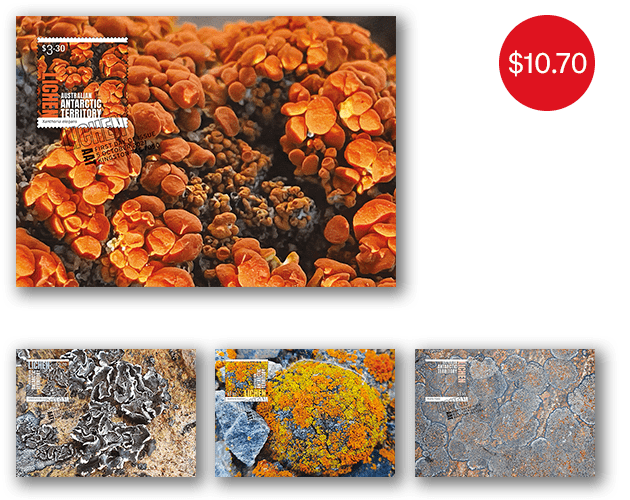
- Set of stamps
- Stamp pack
- Minisheet
- Maxicard set
Additional products:
- Gutter Strip of 10x $1.10 Buellia Frigida Stamps
- Gutter Strip of 10x $1.10 Xanthoria Mawsonii Stamps
- Gutter Strip of 10x $2.20 Umbilicaria Decussata Stamps
- Gutter Strip of 10x $3.30 Xanthoria Elegans Stamps
- Pictorial Envelope for the AAT: Lichen Stamp Issue
- First Day AAT: Lichen Gummed Stamps Cover
- First Day AAT: Lichen Minisheet Cover
This content was produced at the time of the stamp issue release date and will not be updated.

